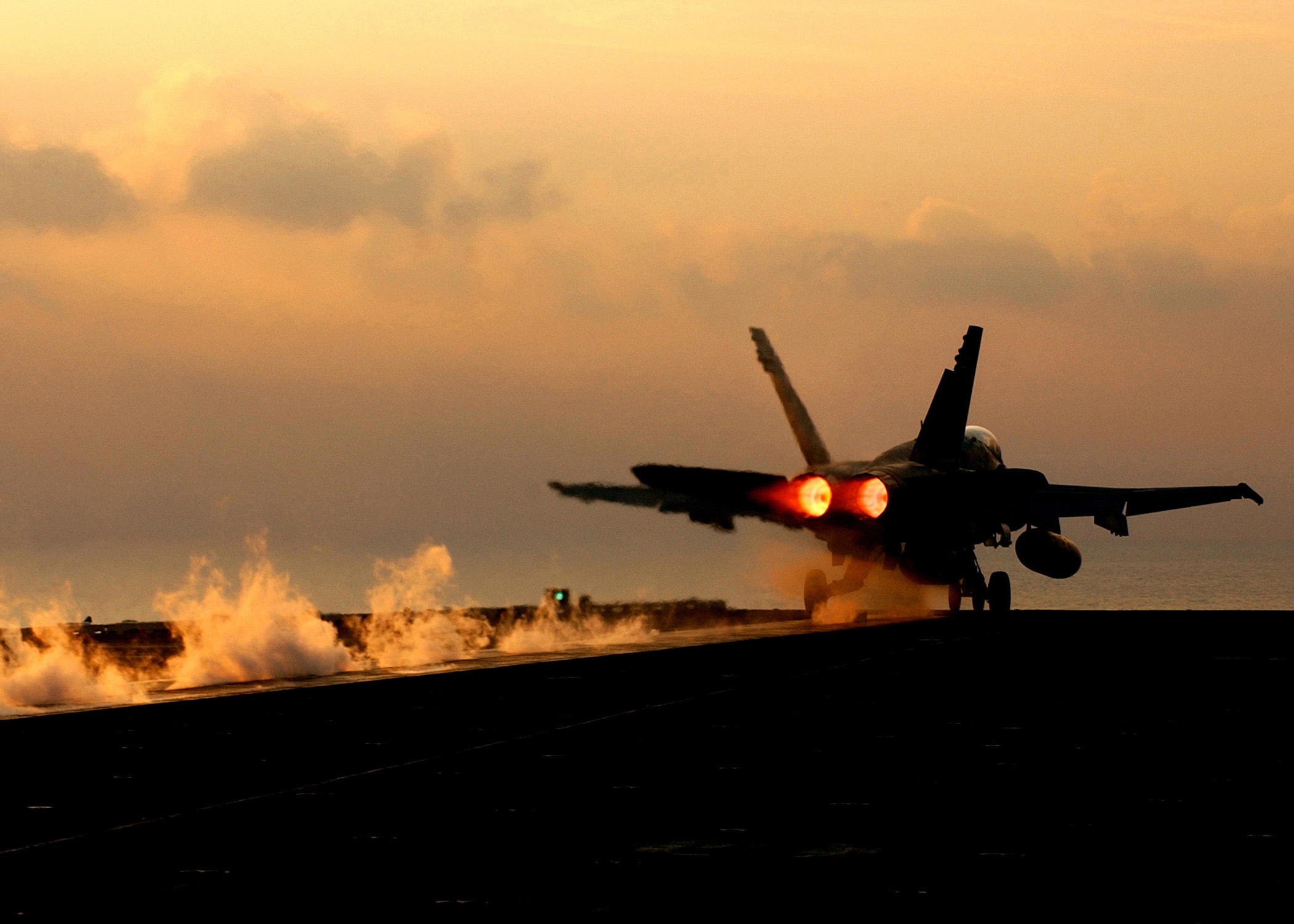
The Navy is coming to a point where it needs to focus on modernization of its aviation assets, a top officer said Tuesday. (File)
WASHINGTON: On Monday, the Navy’s top officer stood in front of an industry-heavy conference and took a direct potshot at the defense industry. Now, a top Navy official overseeing the service’s aircraft requirements says those comments are based around analysis about how current aircraft will stack up against future threats.
Chief of Naval Operations Adm. Michael Gilday raised eyebrows when during the opening panel of the Sea Air Space exposition on Monday he told industry to to focus more on delivering ships out of maintenance availabilities and less on lobbying Congress for “aircraft we don’t need.”
The blunt comments from the CNO reflect the limited funding the services are expecting to receive given the political winds changing in Washington with a new administration. While the remarks may be more bark than bite given lawmakers ultimately have the final say on programmatic adds to the budget, they are strikingly different than the open arms approach senior brass usually give to industry during major conferences.
Rear Adm. Andrew Loiselle, director of air warfare requirements, on Tuesday followed up on the CNO’s comments, saying that “There isn’t a lot of analysis out there that supports fourth generation [aircraft] viability” against threats in the 2050 timeframe.
Given the funding environment, Loiselle said, he can choose to buy one new production aircraft or potentially send three aircraft through the service life modification program for the same price. The bottom line, he indicated, is the service must make sure the aircraft in its fleet are prepared for a future fight, he said, and that may require taking some level of risk with the number of planes.
The balance between buying more F-18s or investing in the Next Generation Air Dominance program — the Navy’s classified program to produce a family of next generation aircraft — has already begun playing out in congressional hearings. The service wants to stop producing new Super Hornets in favor of developing NGAD. Loiselle recently told lawmakers the service now expects to close the standing strike fighter shortfall four years earlier than previously anticipated.
Lawmakers, particularly those whose districts produce Super Hornets, have argued for the production line to remain open — with, it would seem from Gilday’s comments, a push from industry lobbyists who benefit from new production on the older planes. Buoying their argument is the need to close that same shortfall combined with some levels of skepticism about the math the Navy is using to claim it will close the gap four years early.
Loiselle also said today that his comments to lawmakers about changing the number of F-35s planned for each squadron was equated with a reduction in the F-35 program of record. He said that was not the intent of his comments and the F-35 program of record remains the same.






















